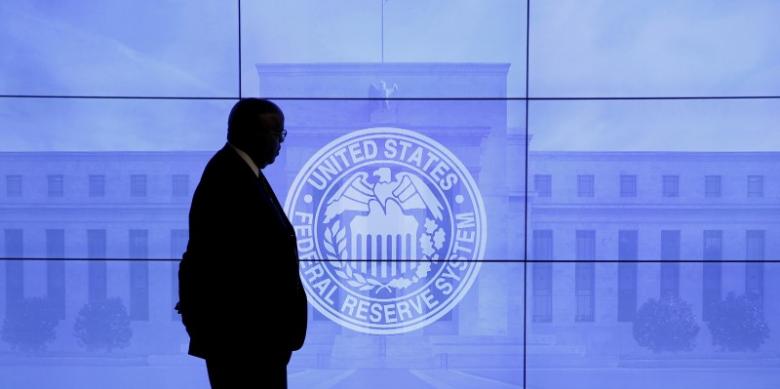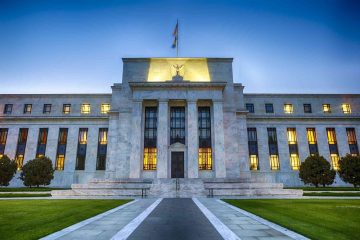The Fed Contrarian Who Saw the Soft Landing Coming

Federal Reserve governor Christopher Waller laid out a novel economic framework two years ago showing how the central bank could bring inflation back to its 2% target without the usual jump in unemployment, stirring furious pushback from economic heavyweights.
Two years later, with inflation edging closer to 2% and unemployment still near a half-century low, Waller is looking prescient. It is one of the reasons the academic economist-turned-central banker is one of the Fed’s most closely watched officials and a name now floated to chair the Fed one day.
In recent years, Waller has been a hawk—a central banker who worries more about high inflation than high unemployment in setting interest rates. One of the reasons for this is a framework that gave him confidence inflation could be brought down without high unemployment, contrary to some standard economic theory.
His theory: In a hot labor market, tight monetary policy would lead employers to slow hiring by scrapping vacancies rather than by laying off employees they had worked so hard to hire.
At the time, in 2022, the Fed had just started raising rates rapidly from near zero after realizing inflation, contrary to its initial view, wasn’t transitory. Critics accused Waller of putting lipstick on a pig of policy mistakes.
His supporting research was rife with “misleading conclusions, errors, and factual mistakes,” wrote Lawrence Summers, a former Treasury secretary, and Olivier Blanchard, former chief economist at the International Monetary Fund, in an August 2022 essay that followed an earlier takedown of the work.
An extremely high 7% of jobs were vacant at the time. Summers and Blanchard showed how in every economic cycle since World War II, unemployment had risen notably two years after the job vacancy rate had peaked. Inflation wouldn’t get close to 2% without sustained higher unemployment, they and other critics said.
Yet since then the vacancy rate has declined to 5.4%, while the unemployment rate is no higher. Inflation fell to 2.6% in December from 7.1% in June 2022, using the Fed’s preferred price index.
In retrospect, the analysis by Waller and a fellow Fed economist “looks quite prescient,” said Jonathan Pingle, a former Fed economist who is now chief U.S. economist at UBS. He said wage growth would probably have to drop further to ensure 2% inflation, “but, wow, they have made a lot of progress in what they foretold.”
‘A situation we’ve never seen’
Typically, job vacancies rise as unemployment falls and vice versa, a relationship called the Beveridge curve after British economist William Beveridge who researched the mismatch between jobs and workers in the 1930s and 1940s.
A burst of demand greeted employers as the economy reopened from the pandemic in 2021. Pandemic disruptions meant they couldn’t find workers, so vacancies soared. Inside the Fed, Waller had begun pushing for an earlier exit to the central bank’s ultra-easy stimulus policies. While some colleagues worried that could upend the labor market, Waller argued demand for workers was so strong they wouldn’t have to worry.
Fed Chair Jerome Powell began publicly echoing that view in early 2022 as officials prepared to raise rates from near zero.
At lunch with Powell that spring, Blanchard pointed to the textbook Beveridge curve in dismissing the Fed’s rosy outlook. Staff briefings to senior Fed officials followed, including one by Andrew Figura, a Fed economist who specializes in labor dynamics, suggesting the Beveridge curve wasn’t stable.
Figura’s research reinforced Waller’s earlier instincts, and he unfurled their conclusions in a May 2022 speech in Germany. They argued the Beveridge curve had become nearly vertical, at least temporarily, meaning vacancies were shooting up without unemployment dropping. Conversely, they predicted cooling labor demand could cause vacancies to plummet without the usual rise in unemployment.
“We’ve never seen this type of demand for workers, and that’s what makes me think we could do it,” Waller said.
The episode has highlighted Waller’s growing influence at the Fed. The Senate confirmed Waller, 64, in late 2020 after his nomination by then-President Donald Trump. Some analysts see him as a possible successor to Powell, whose term expires in May 2026, if Trump retakes the White House next year.
Waller, the first in his immediate family to attend college, planned to study accounting and business when he enrolled at Bemidji State University in northern Minnesota. He switched to economics after a professor captivated his interest, earning a D on his first exam but finishing with the highest score on the final. He went on to earn a Ph.D., taught at the University of Notre Dame, and in 2009 became research director at the St. Louis Fed.
Waller speaks in plain, conversational language with self-effacing humor, avoiding jargon. Former students say it is reminiscent of lectures he delivered without notes.
In 2019, Trump was upset that the Fed wasn’t cutting rates faster but struggled to get the Senate to confirm a loyalist to the Fed board. Larry Kudlow, a White House adviser, sought counsel from the then-St. Louis Fed president, James Bullard, who had argued against raising rates and was now pushing to lower them. Bullard recommended Waller.
Waller, who had written papers extolling the Fed’s independence from the White House, had never spoken with Trump before. At his Oval Office interview, Waller appeared to charm the president, according to a person with knowledge of the meeting.
For example, he told Trump he was a free trader, a position clearly at odds with the president’s love of tariffs. When Trump boasted of how he had used tariffs in ways no president had done before, Waller wryly agreed, defusing any potential discord.
“Here’s how I would characterize it: In that meeting, Waller was a mensch,” said Kudlow, who had arranged the interview. “And by the way, Trump likes mensches.”
Last month, Waller took what amounted to a victory lap. The recent episode “shows that good theory combined with good data analysis can lead to good policy outcomes, even if the predictions challenge conventional wisdom,” he said.
“It is clear that [Waller and Figura] were more right than we were,” said Blanchard in an email. “The story is not over yet, but using a football analogy, at the end of the third quarter, they are clearly ahead.”
In an interview, Summers said, “Certainly, the data so far has run in Waller’s direction, but…we’re still some substantial distance from confidence that we have enduring, 2% inflation.”
In his speech last month, Waller also said his earlier framework argued for caution against keeping rates too high for too long. If the vacancy rate, instead of stabilizing, falls below 4.5%, unemployment would likely rise sharply, he said. While falling vacancies, as predicted, have yet to signal broader labor-market stress, Waller said, “We argued this couldn’t go on forever.”

